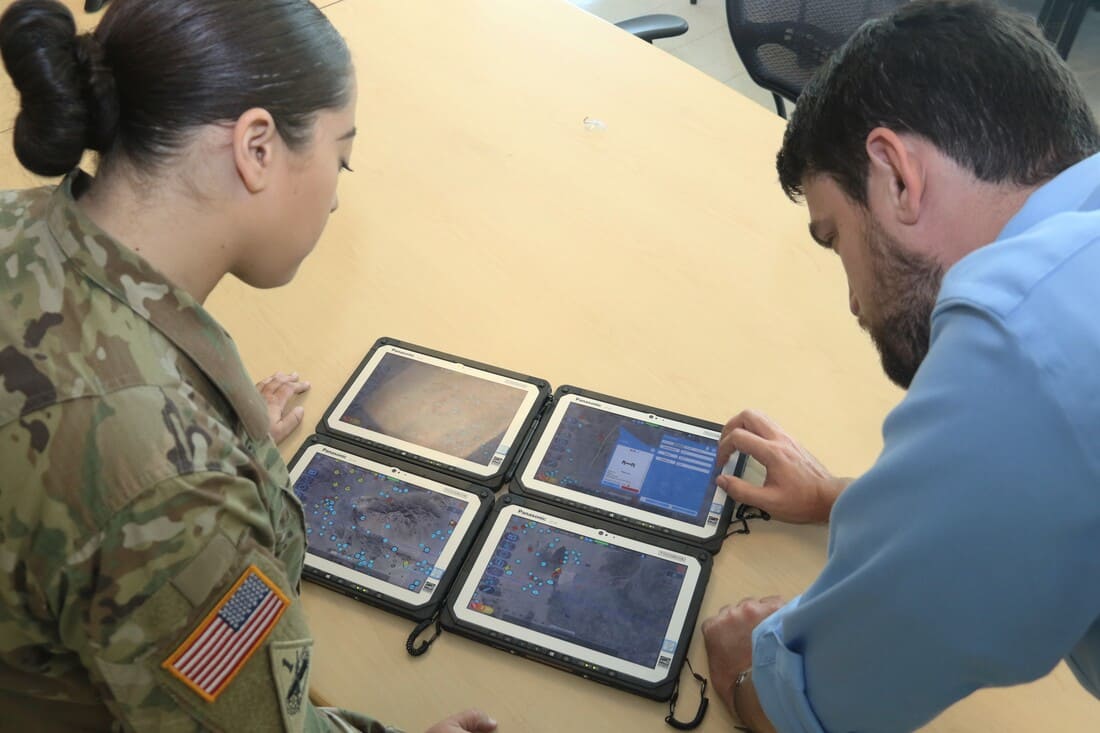The U.S. Army approved a 10-year enterprise agreement with Palantir that carries a ceiling of $10 billion and folds 75 seperate arrangements into one contract vehicle. Officials said this instrument replaces scattered, duplicative buys with a single catalog that lists products and services with clear unit prices and quantities. Orders will be placed through task orders under the umbrella agreement. The Army noted the ceiling is not a spending commitment and programs will purchase only what they fund.
The instrument covers commercial software tied to data integration and analytics, AI modules and support such as training and data engineering. Officials said the deal removes most reseller mark-ups that built up when offices bought through layered packages. Volume pricing applies across the enterprise, and other Defense Department components can ride the terms if they obtain approvals. That option broadens demand without standing up new contracts for identical items.
Army CIO Leonel “Leo” Garciga described the aim as simple: lower cost and less complexity for buyers. “How do we get better buying power across the board?” he told reporters, pointing to standard items, published tiers and a common ordering path. His office wants a clear picture of license counts and renewals so budget owners can plan and avoid lapses. That record also ties purchases to actual users instead of carrying idle seats across multiple commands.
Danielle Moyer, executive director of Army Contracting Command at Aberdeen Proving Ground, explained how selection works inside the vehicle. Her team split products from services so a program can choose licenses, training or integration support without taking a bundle. “It’s kind of like an a la carte menu versus an all-you-can-eat or one-size-fits-all,” she said. She added that the Army will use it’s scale to secure the best discounts and avoid paying different prices for the same item across installations.
Officials said the agreement contains a minimum guarantee, though they did not disclose the amount. Once early orders satisfy that threshold, follow-on buys will occur only when programs document need and allocate funds. The vehicle does not block competition. If a different vendor fits a new requirement, a program can compete that buy outside the contract. Security accreditations remain in place as usual. The vehicle eases buying; it does not change risk or policy checks on the networks where software runs.
This is the first agreement of its kind between the Army and Palantir. Talks with other software vendors are in progress, focusing on categories where offices have repeatedly bought the same tools through separate awards. The aim is to shift those purchases to standard terms that any command can use after basic network checks, with identical unit prices and support levels.
Of the 75 lines merged under the deal, 15 list Palantir as the prime contractor and about 60 as a subcontractor. Consolidating them aligns product versions and service tiers across commands and cleans up license records that auditors have flagged for mismatches when units relocated. Program managers now have a single view of seat holders, renewal dates, and support tiers.
U.S. Army $10B Palantir Enterprise Contract Streamlines Software Procurement and Cuts Costs
The agreement sets a 10-year ordering window with a ceiling of $10 billion. It replaces overlapping purchases that left commands with uneven terms and extra cost’s. The catalog now defines price bands by scale and support level, with a clear split between software and services so requirements can be compared directly as they change.
Rates drop at higher volumes for both named licenses and usage-based tools. Units using shared data models can add users under existing price tiers instead of negotiating alone. Commands no longer need to buy bundled packages to get a discount, they can take only the tools they will use and still recieve enterprise pricing as adoption expands.
Each task order will set the technical scope for a deployment, including data sources, connectors, hosting locations and support hours. Program offices keep control over scope and performance while the vehicle provides fixed terms and stable pricing. Risk and authority-to-operate approvals stay with each network.
Teams that once spent months on market research and new solicitations can now order against established terms, cutting paperwork for contracting staff and giving technical teams more time to deliver. The change also reduces the risk of loosing coverage during renewal cycles.
Current program contracts remain active until they close. In December, the Army extended the Vantage platform with a four-year award worth $400.7 million and a ceiling near $618.9 million, keeping capability in place while a common procurement path was set. The new enterprise vehicle now sits above individual program lines, supporting follow-on orders when multiple offices need the same tools.
Effects on Palantir, Integrators, and Defense Software Buying
For Palantir, the deal provides a long-term channel to a major customer while keeping the door open for competition on new requirements. The Army can buy licenses directly, reducing the role of pure resellers. Integrators remain involved for data engineering, change management and links to other systems, their focus shifts from pass-through transactions to delivery work.
Program offices gain more predictability. With published tiers and standard items, staff can plan seat counts, support hours and training cycles in advance. If the needs expand, they can add scope through a short task order instead of building a new contract. That flexibility supports units preparing for deployments or large excercises, when extra users are needed quickly.
Commands that manage readiness and personnel data benefit when software versions match across posts. Soldiers who transfer keep the same dashboards and permissions. Schools can train on current releases rather than adjust to mismatched builds. Support desks can link tickets to known service tiers and route them through a single chain of responsiblity.
According to industry sources, other services are studying the model because it deals with common pain points: fragmented pricing, repeated buys and slow award timelines. Some may prefer multi-vendor portfolios with shared terms, others may mirror a single-vendor instrument for categories where one tool already dominates adoption. Either way, leadership favors fewer, broader contracts with standard items that many commands can use.
Defense officials confirm negotiations are underway for additional enterprise structures that cover collaboration suites, cybersecurity tools and DevSecOps pipelines. Each would keep program-level control over scope and accreditation while trimming time to purchase. Success still depends on execution inside commands.
These practices will guide how the Army uses the agreement:
- Governance: set internal checkpoints for scope, funding, and version control before orders go out.
- License hygiene: keep one dashboard listing named users, roles, and renewal dates to avoid waste.
- Training alignment: match lesson plans to the modules units actually field.
Ordering cycles will shorten as offices skip fresh solicitations. Renewal spikes will ease when purchases are spread through the year. Price disputes will drop with all rates in one catalog. Software inventories will improve because every task order runs through the same vehicle with consistent data fields.
Palantir’s presence in the Army gives the agreement a head start. The Vantage extension kept access in place while a common channel was set up for recurring needs. Maven licensing covers a separate mission that relies on frequent updates. The enterprise vehicle provides a direct path to add users or modules when missions change and more units need the same tools.
REFERENCE SOURCES
- https://www.washingtonpost.com/technology/2025/07/31/palantir-army-contract-10bn/
- https://defensescoop.com/2025/07/31/army-palantir-software-enterprise-agreement-10-billion/
- https://www.defenseone.com/defense-systems/2025/08/armys-giant-data-deal-palantir-harbinger-service-cio/407174/
- https://www.army.mil/article/287506/u_s_army_awards_enterprise_service_agreement_to_enhance_military_readiness_and_drive_operational_efficiency
- https://investors.palantir.com/news-details/2024/Palantir-Expands-Army-Vantage-Partnership-with-618.9M-Contract/
- https://www.defense.gov/News/Contracts/Contract/Article/4194643/
- https://defensescoop.com/2025/05/23/dod-palantir-maven-smart-system-contract-increase/
- https://breakingdefense.com/2025/08/army-consolidates-dozens-of-palantir-software-contracts-into-one-deal-worth-up-to-10-billion/
- https://www.barrons.com/articles/palantir-stock-army-ai-eefde1cf



